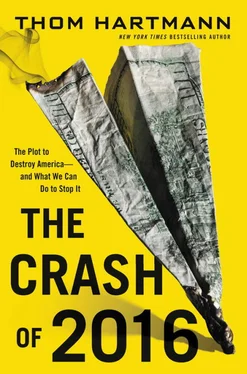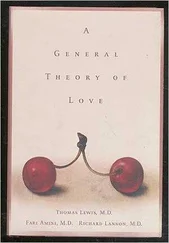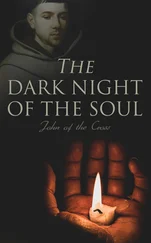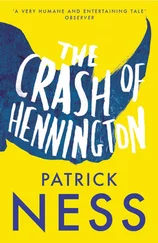Forty years after the Powell Memo instructed that the “judiciary may be the most important instrument for social, economic and political change,” the Royalists held a five-to-four majority on the highest court in the land.
And as the Royalists were expanding their influence in the United States, they had the perfect ally in John Roberts. Whether it was his work as a clerk on federal courts, as a lawyer in the White House under both Reagan and George H. W. Bush, or as a millionaire corporate lawyer, there was a common theme to Roberts’s approach to American law—a theme that was put on steroids when he ascended to the pinnacle of the American legal system.
As Jeffrey Toobin notes in a New Yorker article documenting the rise of John Roberts, entitled “No More Mr. Nice Guy,” “In every major case since he became the nation’s seventeenth chief justice, Roberts has sided with the prosecution over the defendant, the state over the condemned, the executive branch over the legislative, and the corporate defendant over the individual plaintiff. Even more than Scalia, who has embodied judicial conservatism during a generation of service on the Supreme Court, Roberts has served the interests, and reflected the values, of the contemporary Republican Party.”
As a US senator, Barack Obama explained his opposition to Roberts’s nomination to the high court, saying on the floor of the Senate, “It is my personal estimation that [Roberts] has far more often used his formidable skills on behalf of the strong in opposition to the weak.” 125
The data would support then Senator Obama’s fears. In 2013, a study out of the University of Southern California concluded that the current Supreme Court under the leadership of Chief Justice John Roberts is the most pro-business court since World War II, with the Chamber of Commerce winning nearly 70 percent of the cases it intervened in. 126
But no Royalist victory was more significant than that of Citizens United v. Federal Election Commission .
During the bruising primary election season of 2008, a right-wing group put together a ninety-minute hit-job on Hillary Clinton and wanted to run it on TV stations in strategic states. The FEC ruled that advertisements for the “documentary” were actually “campaign ads” and thus fell under the restrictions on campaign spending of the McCain-Feingold Act, so they stopped them from airing. (Corporate contributions to campaigns have been banned repeatedly and in various ways since 1907, when Republican president Teddy Roosevelt pushed through the Tillman Act.)
Citizens United, the right-wing group, took the case to the Supreme Court, with right-wing hit man and former Reagan solicitor general Ted Olson—the man who’d argued Bush’s side of Bush v. Gore —as their lead lawyer. Some newspaper reports have placed John Roberts in Florida during the 2000 election-recount fiasco assisting Olson and the Bush legal team in convincing the Supreme Court to stop the statewide recount. Roberts claims he was just taking a vacation. Either way, a decade after the high court handed George W. Bush, and the Economic Royalists, the presidency in 2000, it would hand the entire institution of American democracy to the Royalists in 2010.
This new case, Citizens United v. Federal Election Commission , presented the best opportunity for the Roberts court to use its five-vote majority (a consequence of Republican rule in the White House for twenty of the last thirty years since Roberts clerked for Justice Rehnquist on a left-leaning court) to totally reshape the face of politics in America, rolling us back to the pre-1907 era of the Robber Barons.
Although he is handsome, with a nice smile and photogenic young children, Roberts is no friend to average working Americans. If anything, he is the most radical judicial activist appointed to the court in more than a century. He has worked most of his life in the interest of the rich and powerful and was chomping at the bit for a chance to turn more of America over to his friends.
In the Citizens United case, the Roberts court listened to arguments, took briefs, and even discussed it among themselves as if they were going to make a decision. But instead of deciding the case on the relatively narrow grounds on which it had originally been argued—whether a single part of a single piece of legislation (McCain-Feingold) was unconstitutional—John Roberts asked for it to be reargued in September 2009 and asked that the breadth of the arguments be expanded to reexamine the rationales for whether Congress should have any power at all to regulate corporate “free speech.”
Striking down any and all restrictions on corporate “free speech” was the logical end result of nearly 125 years of Supreme Court decisions, beginning in 1886 with the Santa Clara County v. Southern Pacific Railroad case, that conceded more and more constitutional rights that were supposed to be reserved for actual people over to corporations.
After the Civil War, three amendments to the Constitution passed to provide fully for the rights of the newly freed African Americans who had formerly been held in slavery. The Thirteenth Amendment explicitly bans slavery; the Fifteenth Amendment guarantees their right to vote. And the Fourteenth Amendment says that they will have full access to the courts and cannot be denied a level of legal and constitutional protections equal to that of white people.
Here, for example, is the entire text of Section 1 of the Fourteenth Amendment, ratified in 1868:
All persons born or naturalized in the United States, and subject to the jurisdiction thereof, are citizens of the United States and of the State wherein they reside. No State shall make or enforce any law which shall abridge the privileges or immunities of citizens of the United States; nor shall any State deprive any person of life, liberty, or property, without due process of law; nor deny to any person within its jurisdiction the equal protection of the laws.
Notice the word “person” in the text.
For over a thousand years of British common law and a century of American constitutional law, attorneys and legislators understood that there are two kinds of “persons.” The first, “natural persons,” are human beings. It was for them, for example, that the Magna Carta was written in 1215.
The second type of “persons” acknowledged by law are, broadly, states and nations, churches and nonprofits, and for-profit and other types of corporations. The reason such institutions need some sort of “personhood” status is so they can engage in interactions with the rest of us—own and pay taxes on land, for example, or sue and be sued. From the seventh-century origins of British common law to the 1870s, nobody seriously challenged these two types of personhood, the need for each, and their clear and explicit differences.
But in the Reconstruction era following the Civil War, the most powerful corporations in America—the railroads—saw an opportunity to use the arguably sloppy construction of the language of the Fourteenth Amendment to radically grab more power for themselves. They and their attorneys began to argue that when the Fourteenth Amendment was written, its authors in Congress explicitly said “person” rather than “natural person” in the last part of Section 1 because they fully intended it to include both “natural persons” and “artificial persons,” such as railroad corporations.
In plain language, they argued that the authors of the Fourteenth Amendment intended to free both the slaves and the corporations, giving to both full constitutional protections.
They sent these arguments up in the Ninth Circuit Court, then presided over by US Supreme Court Associate Justice Stephen J. Field (back then the SCOTUS Justices “rode the circuit” most of the year, and just met in Washington, DC, for a few months every year to convene as the Supreme Court). And Field was deeply in the pockets of at least one, and probably more, of the railroad barons.
Читать дальше












